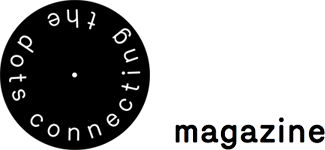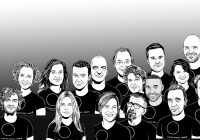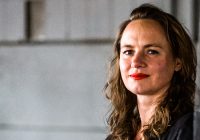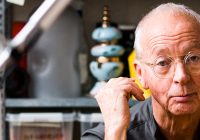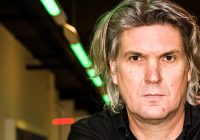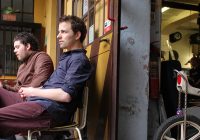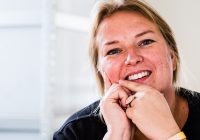We create alternatives
Interview by Sanne van der Beek
Portrait by Anuschka Blommers / Niels Schumm
This is an interview about social design, without discussing ‘social design’. You see, Thomas Widdershoven, head of the Design Academy Eindhoven and owner of graphic design studio Thonik, doesn’t like the term. ‘Social design is a vogue word that is past its peak.’
RETURN TO THE ESSENCE OF SOCIAL DESIGN
Widdershoven explains why he is so critical: ‘Certain phenomenon are relevant for longer than language can communicate that urgency. You have to reformulate language regularly, because at a certain point it loses its edge. Social design had a particular appeal because you get the belong together. The moment these two things are connected, it gives you a jolt that shakes you up. When the effect of that jolt has worn off, you are left with the melancholy feeling that you remember how much fun it used to be.’
Struggling to free yourself from ideas and concepts, to return to the essence seems typical for Widdershoven’s approach. The iconic imagery that he created with his partner, Nikki Gonnissen, for the city of Amsterdam, the Socialist Party and the Holland Festival, are stripped of any finery, allowing the message to be communicated as clearly as possible. His approach as head of Design Academy Eindhoven,which he has been running for 2.5 years, is also characterised by thorough re-evaluation. ‘I really want to give myself time to articulate the message about the school that I want to communicate. In the beginning I felt what it should be, but I had not found the right words for it yet.’ The trilogy of exhibitions that Widdershoven organised with the Van Abbe Museum – Self / Unself in 2013, Sense / Nonsense in 2014 and Thing / Nothing, which will be presented during this Dutch Design Week – have served as a public study of the position of today’s designers and the field of force in which they currently find themselves.
TIME FOR FUNDAMENTAL QUESTIONS
Despite the fact that Widdershoven does not like to talk about ‘social design’, he sees ‘design with social relevance’ as playing an important role ‘I believe that the influence of design on society is becoming greater and greater. Design has the power to shape social and technological innovation.’ However, Widdershoven does not see this as a one-to-one influence. ‘You should not allow yourself to be limited to reducing the world to solvable problems. It is not enough if you really want to bring about change at a fundamental level. That requires cultural perspective and design can offer that.‘
Widdershoven believes that design currently has a clear added social value because it coincides with the Zeitgeist. He sketches a historical development in which the field of design belonged to a small niche at first and then went on to include the cultural field – the high end in particular – which turned out to have a need for unique items. It was a need that design took upon itself because the arts could no longer cope. His own speciality, graphic design, also went through a period in which it coincided with social trends, when branding became one of the most important economic driving forces in the 90s. ‘It is inviting to think that design’s focus on society is not just a random trend, but is part of a greater whole’, Widdershoven believes. But more importantly, Widdershoven sees in this a reevaluation of the position of artistic design education, to which he attributes a great role as a partner in the development of design with social relevance. ‘The expertise of the designer is perfect for the inclusion of this momentum in the current spirit of the times. Designers do not think in direct solutions, but, at the same time, are able to concretise matters very well, which exceeds the planning stage and translates into physical interventions. That which is being made becomes freer than the plans produced by, for example, urban planners or politicians. In that sense, I believe design to be the perfect catalyst.‘

Giuditta Vendrame, “What is the purpose of your visit?” Photo by Lisa Klappe
ALTERNATIVES INSTEAD OF SOLUTIONS
Digging deeper to disrupt existing systems, that is how Widdershoven sees the added value of contemporary design, which is not limited to the ‘social’ label. A focus on the world that may not always lead to concrete solutions, but does lead to the development of alternatives that Widdershoven describes as ‘perhaps less focussed, but not less relevant’. He states: ‘Being able to mean something in the greater system crises that characteris this age requires a freer way of thinking. Take a look at the economic crisis of 2008, for example. I don’t get the feeling that we took away any fundamental lessons from that. The same goes for the ecological crisis that we have been facing since the 1960s. We are just waiting for the next crisis. It is time to start thinking differently.’ His contemplation leads Widdershoven to the word that he believes better describes the mentality of the social impact that design can have, than the term ‘social design’. ‘I think the word “alternative” is very interesting at the moment, because it carries a certain amount of unaccountability. It does not mean you will be solving all existing problems. It creates space for free thinking. Problems that are greater and deeper than you can solve quickly require free thinking to reach fundamental measures.’
In his speech to the newly graduated designers of 2014, he also encouraged them to keep thinking small and freely, despite all the weight of the world on their shoulders. One of the designs at this Graduation Show illustrates this. The ‘High Waters’ project by Giuditta Vendrame seems very simple and conceptual – you do not see much more than containers of water – but it is powerful because it thoroughly questions our relationship to ownership. As it happens, the water in the containers originates from international waters, the last bits of earth that do not belong to any state. The only thing this represents is an alternative idea, but perhaps that is enough.
THE POWER OF SMALL-SCALE
According to Widdershoven, the catalysing effect of an idea like High Waters rests in two words: small scale. ‘What is extraordinary is that, today, many small-scale initiatives are launched that can have a great impact thanks to technology such as social media, which can circulate them. Take, for example, a simple idea like De Krat [ The Crate ], which delivers a crate of products from local farmers to consumers’ homes every week. 10 or 20 years ago, this kind of initiative was small-scale in the negative sense of being marginal. It is no longer necessary for De Krat to be rolled out like a chain, the only thing that has to be picked up is the idea. De Krat can just as easily be started in Paris as in Amsterdam, and although that might take on a completely different form, it does contribute to the same basic objectives. As an open source business model, something like this can roll out all over the world, creating a multiplier effect.
‘‘Do not underestimate the impact of “small” projects’, Widdershoven warns. ‘It is very anti-economical for people to share ideas and to be able to realise ideas in different locations. You will not solve social problems through increase in scale. It has to remain small-scale to bring about a different type of economy.
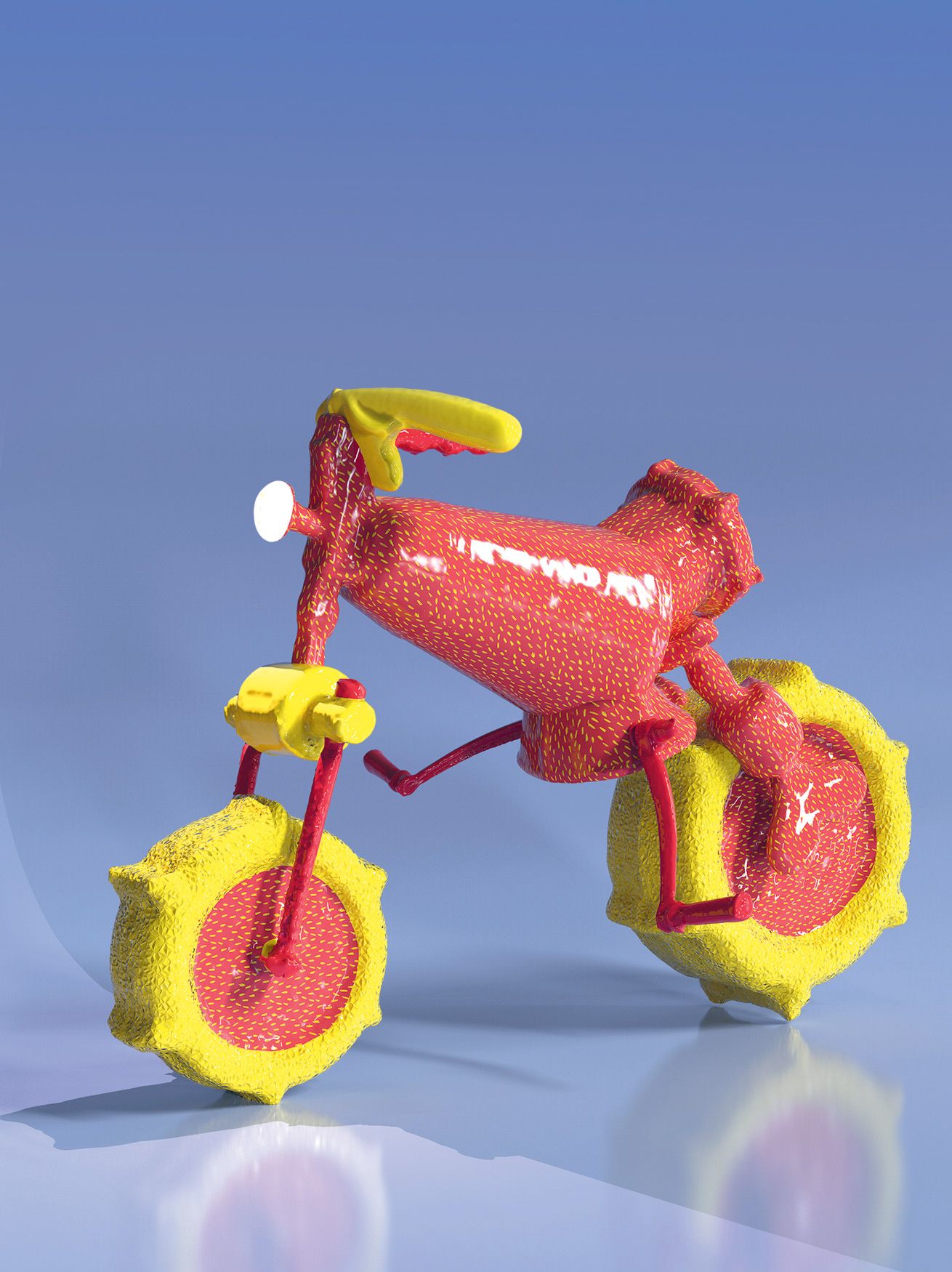
Bastiaan De Nennie, Digital Virtuosity – A proposal for a new set of principles for the design process,
which is fast digitalising. His method takes physical objects, deconstructs them in the computer
and puts the different parts from different objects back together. Digital Virtuosity, with its man-made
choices and computer generated distortions, leads the way.
SOCIAL RESPONSIBILITY IN EDUCATION
It seems to be a heavy responsibility that not only rests on the shoulders of young designers, but also of educational institutions. How do you teach the bearing of social responsibilities?
Widdershoven laughs: ‘We do not have to teach our students social responsibility. They see these crises too and are motivated to get their teeth into them. Incidentally, that is something of the last five years.’ Moreover, according to Widdershoven, this generation of students has a certain innate feeling for the use of technology and the sharing of knowledge in order to circulate ideas throughout the social system, allowing them to change it from the inside out. This has dramatically changed his role as head of a knowledge institute. ‘I believe that the traditional top down model of knowledge transfer is old-fashioned. I see it as our task to bring together the knowledge and abilities that all the students have within them and the knowledge that the older generation has to offer. To do so, we try to keep the structure of education as simple as possible to allow focus on substance.’
However great and fundamental the issues that the students want to tackle are, for Widdershoven the craft remains at the heart of education. ‘Becoming skilled with clay might seem to have nothing to do with social impact, but by creating something you learn something indispensable. You go through all kinds of psychological steps during the practical creation process that you also go through when creating design with social impact. You have to have great inner strength to create something and to be able to distance yourself from it at the same time.’
When I mentioned the words ‘homo universalis’ as a description for the wide range of skills that designers need to have to tackle social issue, Widdershoven perks up. ‘The term homo universalis is extremely dangerous. It makes you lose sight of what it is really all about, namely collaboration involving parties with a wide variety of backgrounds. These collaborations only work if everyone has his or her own expertise. This is not only the prerequisite for collective intelligence, but also to make the project sustainable for the future. In many cases, designers’ expertise regards aspects that give form, i.e. bringing that which already exists into a configuration. In short: at the end of the day, we are and will remain designers, whatever issues we take on.’
This interview was published in the Social & Green Design Guide by Connecting the Dots and The DOEN Foundation during Dutch Design Week 2015. Read the entire publication here.
